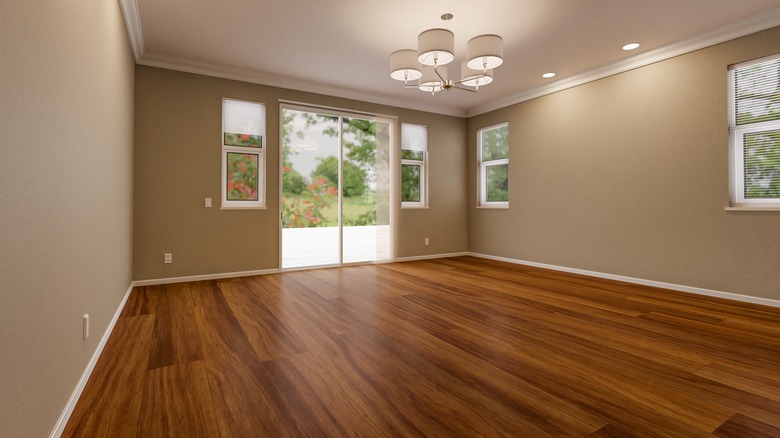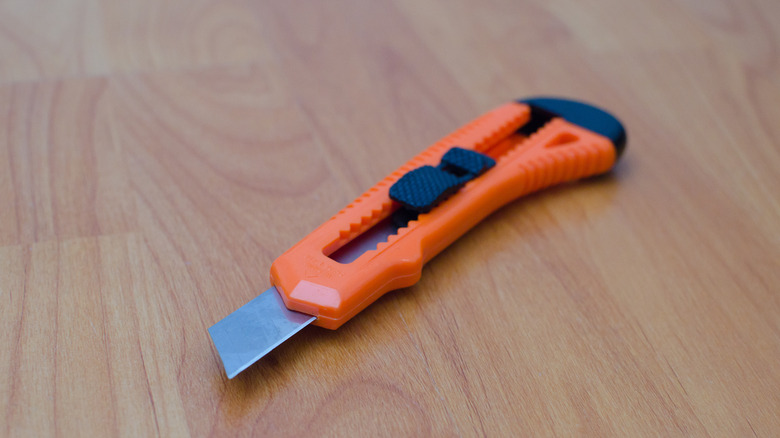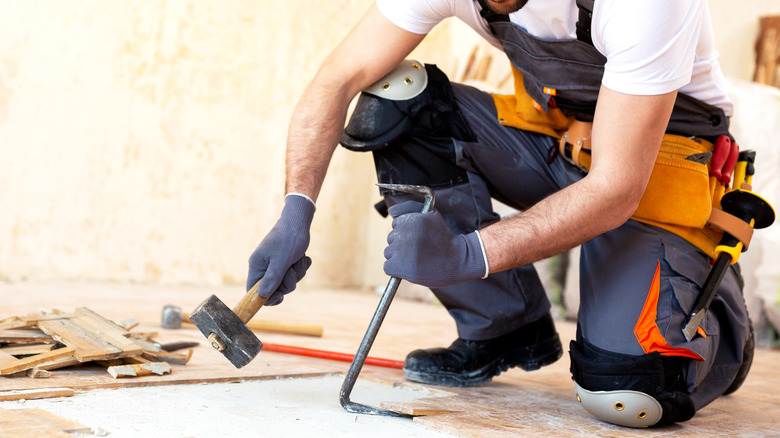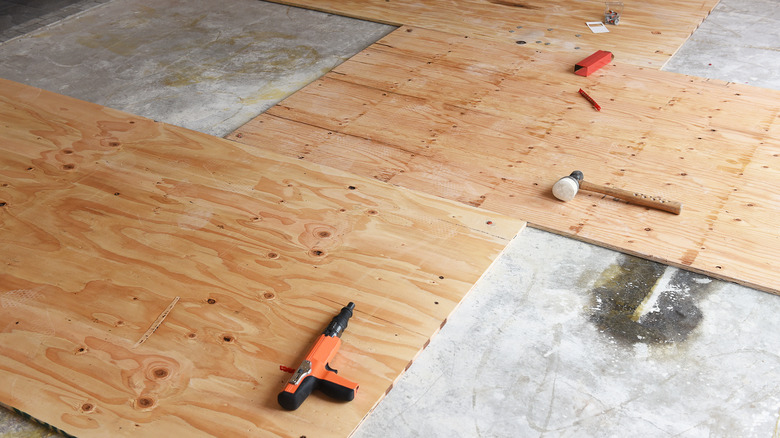How To Take Out Your Laminate Flooring In 3 Simple Steps
Laminate flooring is stylish, durable, and relatively affordable, making it a popular choice among homeowners. Glue-down laminate floors are the more stable type and are used in rooms with a lot of foot traffic. Floating floors are easier to install and are ideal when the surface is hard to glue boards to. Laminate flooring is made up of several layers, including a protective surface that protects the material from stains, indentations, and fading, notes FlooringAmerica. However, it is only recommended for living rooms, bedrooms, hallways, and other areas that don't get a lot of moisture.
In addition to its lack of moisture resistance, laminate flooring can't be refinished like other types of flooring. When it becomes severely worn or damaged, it needs to be replaced, says Spray Gadgets. The process of removing laminate flooring is not overly difficult, but it does require the right tools and knowledge of exactly how to go about it. Follow these three simple steps when you need to take out your laminate flooring.
Prepare the floor
The first step is to prepare by gathering your tools and getting the room ready. You will need to wear protective equipment, including boots and safety goggles, and will require a utility knife, a flat pry bar, and something to scrape off any glue residue. Just like during the installation, removing the furniture and everything else in the room will make things easier.
To prepare the floors, soak them in hot water by mopping so that the glue melts and it's easier to pry off the boards. Alternatively, you can use a motorized floor stripper or heat gun for this. If some time passes before you remove all the boards, the glue might harden again so you might need to use the tools multiple times, per Impressive Interior Design. The last step of preparation before you start on the flooring boards is to remove the skirting boards and any transition strips with the pry bar so that they don't affect the process, says ToolCrowd.
Remove the laminate flooring boards
How you will remove the flooring depends on if you intend to reuse it or not. If you want to preserve the boards, work slowly and carefully while removing the pieces to prevent breakage and damage. you may also want to mark the boards as you go so you know the order in which to reinstall them. Keep in mind that glue-down laminate floors will often break during this process, which means they can't be reused. Floating floors, on the other hand, are temporarily locked together with a tongue and groove and can often be removed without damaging them, explains ToolCrowd.
It's easiest to start by removing the board closest to the wall, specifically on the tongue side. Using a pry bar, gently peel the boards off the wall one by one. You can also use your hands, but make sure they are protected with quality work gloves. Floating floors will easily come off, but you will have to pull glued floors toward you to break the bond of the glue. Protect your eyes from any flying debris with safety glasses and protect your feet from any pieces or nails with strong shoes.
Scrape off the adhesive residue
Even after the hot water treatment, glued-down floors will usually leave a residue that needs to be scraped off. This is so that the subfloor can be smooth again for any new flooring. You can use a heat gun, a floor scraper, or a glue-removing solution for this task. If using the solution, ensure that you wear gloves and there is fresh air coming into the room to let out the fumes, warns Impressive Interior Design.
Subfloors can be made from plywood, cement, or concrete. If the surface is wood, you can also use an orbital sander to smooth it. If it is concrete, Zothex recommends a reciprocating saw with a floor scraper attached. After removing all of the boards and any glue residue, rinse the concrete floor with clean water. The final step in this whole process is to clean the room thoroughly to get rid of any remaining dust and debris.



